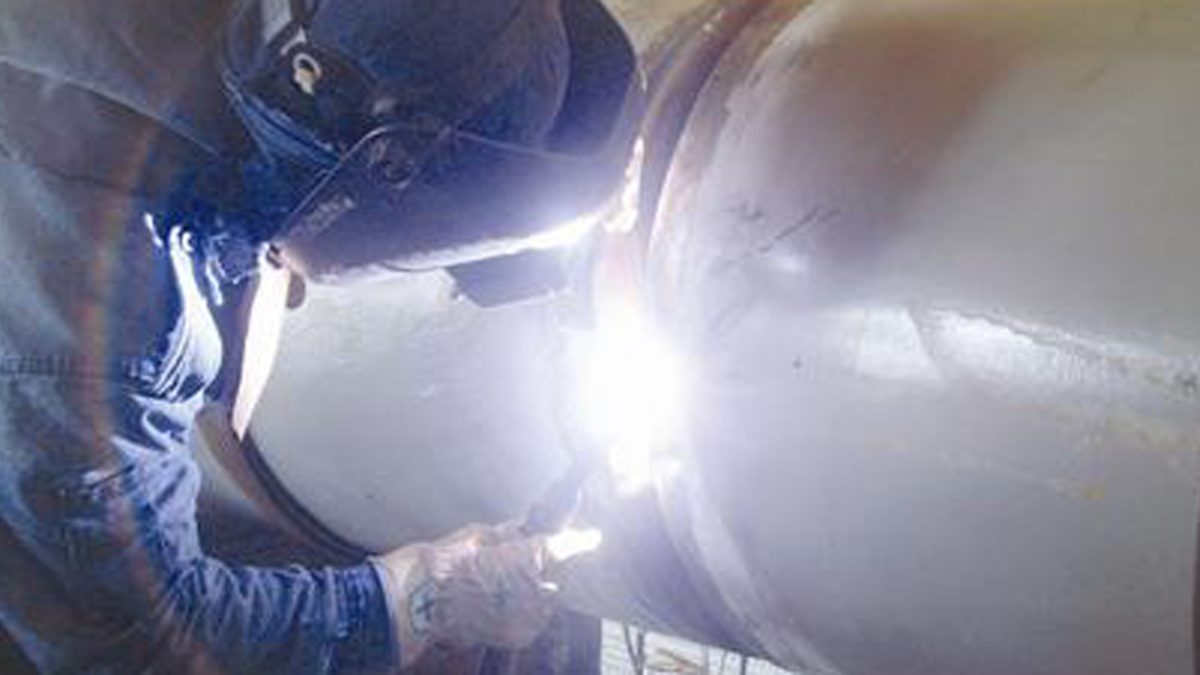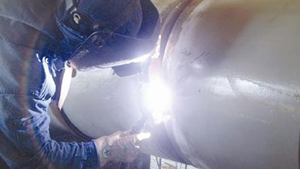If you are looking to embark on a career in pipe welding, or simply want to improve your skills in this area, this comprehensive guide is for you. In this article, we will provide you with valuable insights and tips to master pipe welding techniques, including best practices and advanced procedures.
When it comes to welding pipes, it’s essential to have a solid understanding of the techniques involved and the factors that contribute to high-quality welds. In this section, we will cover the basics of pipe welding, including welding techniques for pipes, and share essential tips to help you achieve efficient and precise welds.
Whether you are a beginner or an experienced welder, this guide will offer valuable insights into the world of pipe welding. We will explore common challenges faced by welders and provide practical solutions to overcome them. Our aim is to help you build a strong foundation in pipe welding techniques that will set you up for success as you progress in your career.

Image by hongky
So, let’s get started and dive into the world of pipe welding, where we will uncover the secrets to mastering pipe welding techniques, including welding techniques for pipes and pipe welding tips.
Basics of Pipe Welding
Pipe welding is a complex task that requires precise techniques and a commitment to quality. To become proficient in pipe welding, it’s essential to understand the basics. By mastering the fundamentals, you can achieve consistent weld quality and ensure the long-term integrity of pipelines.
Best Practices for Pipe Welding
When it comes to pipe welding, there are several best practices that can help you achieve optimal results. These practices include:
- Ensuring a clean working environment to minimize contaminants
- Properly preparing the pipe for welding, including beveling and tacking
- Selecting the appropriate welding technique for the specific project
- Using the correct welding parameters and maintaining appropriate heat input
- Inspecting the weld for defects and addressing any issues promptly
Factors that Contribute to Weld Quality in Pipe Welding
Several factors can affect the quality of pipe welds. These include:
- The skill and experience of the welder
- The welding technique used
- The quality of the materials used
- The welding equipment and tools used
- The environmental conditions during welding
| Factor | Impact on Weld Quality |
|---|---|
| Skill and experience of the welder | Highly skilled and experienced welders can produce consistent, high-quality welds. |
| Welding technique used | The appropriate welding technique must be chosen to suit the project’s specific requirements and the type of material being welded. |
| Quality of materials used | The quality of the materials used can impact the weld quality and the long-term durability of the pipeline. |
| Welding equipment and tools used | The use of high-quality welding equipment and tools can contribute to better weld quality and improved efficiency. |
| Environmental conditions during welding | The environmental conditions during welding, such as temperature and humidity, can have an impact on weld quality. It’s essential to ensure the appropriate conditions are maintained during welding. |
By understanding these factors, you can take steps to minimize the potential for defects and ensure the best possible weld quality.
Advanced Pipe Welding Techniques
By now, you should have a solid understanding of the basics of pipe welding. It’s time to explore advanced techniques that will enhance your skills and enable you to achieve more efficient and precise welds.
Tack Welding
Tack welding is a technique used to temporarily hold pieces of metal together before a final weld. It’s crucial to tack weld in the correct places to ensure that there are no distortions or misalignments during the final welding process. One of the best ways to tack is to use a ‘stitch’ technique, which involves welding the pieces of metal together in small sections. This method ensures that the parts don’t warp or move during the welding process.
Backstepping
Backstepping is a technique used to prevent shrinkage and distortion of the metal. It involves welding small sections of metal in alternating directions from the end of the weld towards the beginning. By doing this, the heat input is reduced, which helps to prevent warping. This technique is particularly useful when welding thin materials.
Hot Pass Welding
Hot pass welding involves welding a root pass (the first weld layer) and then immediately filling it in with another pass. This technique is useful when welding thinner materials because it helps to prevent burning through. Additionally, hot pass welding can help to speed up the welding process as you don’t have to wait for the root pass to cool before filling it in.
Pipe Welding Procedures
There are several pipe welding procedures that you can use depending on the material you’re welding and the type of joint you’re welding. Some of the most common include:
| Procedure | Description |
|---|---|
| Gas Tungsten Arc Welding (GTAW) | Also known as TIG welding, this technique uses a tungsten electrode to produce the weld. GTAW produces high-quality welds but is slower than other welding methods. |
| Gas Metal Arc Welding (GMAW) | Also known as MIG welding, this technique uses a wire feeding system to supply the weld metal. GMAW is faster than GTAW but produces lower quality welds. |
| Shielded Metal Arc Welding (SMAW) | Also known as stick welding, this technique uses a consumable electrode coated in flux to produce the weld. SMAW is a versatile and inexpensive method, but it produces lower quality welds than GTAW or GMAW. |
It’s important to choose the most suitable procedure for the job to ensure that you achieve the highest quality weld possible.
By incorporating these advanced techniques and selecting the most suitable welding procedure, you can achieve efficient and precise welds that meet the highest standards of quality.
Obtaining Pipe Welding Certification
Obtaining a pipe welding certification can provide numerous benefits, including increased job prospects, credibility within the industry, and the potential for higher earnings. This section will guide you through the process of obtaining a pipe welding certification and highlight the importance of adhering to safety measures during the welding process.
Pipe Welding Certification Requirements
Before pursuing a pipe welding certification, it’s important to understand the specific requirements set by the certifying body. Generally, these requirements include a combination of education, training, and practical experience.
| Certification Body | Requirements |
|---|---|
| American Welding Society (AWS) | Completion of a welding program or apprenticeship, passing a practical welding test, and passing a written exam. |
| National Center for Construction Education and Research (NCCER) | Completion of a welding program or apprenticeship and passing a written exam. |
Prioritizing Safety in Pipe Welding
During the pipe welding process, it’s crucial to prioritize safety measures to prevent potential hazards and ensure a secure working environment. Some essential safety measures to keep in mind during pipe welding include:
- Wearing appropriate personal protective equipment (PPE), including gloves, eye protection, and respiratory protection.
- Ensuring proper ventilation to prevent inhalation of harmful fumes.
- Keeping the welding area clean and free of flammable materials.
- Checking welding equipment regularly to ensure proper function and prevent malfunctions.
By prioritizing safety measures and adhering to industry standards, you can not only protect yourself but also maintain consistent weld quality and adhere to certification requirements.
Troubleshooting Common Pipe Welding Challenges
Pipe welding can present various challenges that require troubleshooting to maintain weld quality. As an experienced pipe welder, it’s crucial to understand the best practices for pipe welding and identify potential obstacles that may arise during the process. In this section, we will explore some common challenges in pipe welding and provide practical solutions.
Warping
Warping is a common issue that occurs during the cooling process of welds. It happens when one part of the metal cools faster than the rest, causing it to shrink and deform. To prevent warping, it’s important to use proper clamping and fixturing techniques. Additionally, preheating the metal before welding can also help alleviate warping.
Porosity
Porosity refers to small bubbles forming within the weld, which can weaken it. This can be caused by contaminants, such as moisture or oil, in the metal. To prevent porosity, thorough cleaning of the metal surfaces before welding is necessary. Additionally, using the proper shielding gas and welding technique can also assist in avoiding porosity.
Cracking
Cracking is a significant issue that can occur during or after welding. It’s typically caused by stresses induced during the welding process or insufficient filler material. To prevent cracking, it’s crucial to correctly prepare the metal surfaces and ensure proper heat distribution during welding. Additionally, adjusting the welding technique and utilizing proper filler materials can also reduce the risk of cracking.
Inconsistent Weld Quality
Inconsistent weld quality can occur due to various factors, including improper heat input, incorrect welding technique, or inadequate electrode manipulation. The best way to maintain consistent weld quality is to thoroughly understand and follow best practices for pipe welding. This includes choosing the appropriate welding technique, properly preparing the metal surfaces, and utilizing high-quality materials. Additionally, regularly inspecting and maintaining welding equipment is crucial to ensuring consistent weld quality.
Conclusion
Pipe welding requires a combination of knowledge, practice, and attention to detail. By following the comprehensive guide provided in this article, beginners can build a strong foundation and progress towards becoming skilled pipe welders.
Remember to prioritize safety and stay updated on industry advancements and regulatory changes. Continuously refine your techniques to achieve exceptional results in pipe welding. Do not hesitate to seek guidance from experienced professionals and attend training programs and workshops to enhance your skills and knowledge.
Final Thoughts
There is no shortcut to becoming a master at pipe welding techniques. It takes time, effort, and dedication to achieve expertise in this complex field. However, with the right mindset and a commitment to continuous improvement, anyone can excel in pipe welding.
As you embark on your journey towards mastering pipe welding, keep in mind that it is a valuable skill that can provide you with lucrative career opportunities and job security. So, don’t give up, keep practicing, and always strive for excellence!
FAQ
What are the most common pipe welding techniques?
The most common pipe welding techniques include shielded metal arc welding (SMAW), gas tungsten arc welding (GTAW), and flux-cored arc welding (FCAW).
How do I ensure high-quality welds when welding pipes?
To ensure high-quality welds when welding pipes, make sure to properly prepare the pipe surface, select the appropriate welding technique, use the correct welding parameters, and maintain a steady hand and consistent motion during the welding process.
What are some tips for efficient and precise pipe welding?
Some tips for efficient and precise pipe welding include using the right size and type of filler metal, maintaining proper joint fit-up, controlling heat input, and regularly inspecting welds for defects.
How can I obtain a pipe welding certification?
To obtain a pipe welding certification, you will typically need to complete a certified pipe welding program, pass a written examination, and demonstrate your welding skills. It’s also important to adhere to safety measures, such as wearing appropriate personal protective equipment and following welding codes and standards.
What should I do if I encounter challenges during pipe welding?
If you encounter challenges during pipe welding, troubleshoot by checking your equipment settings, evaluating joint fit-up, ensuring proper electrode or filler wire selection, and consulting experienced welders or welding resources for guidance. Practice and experience will also help you overcome common welding challenges.
